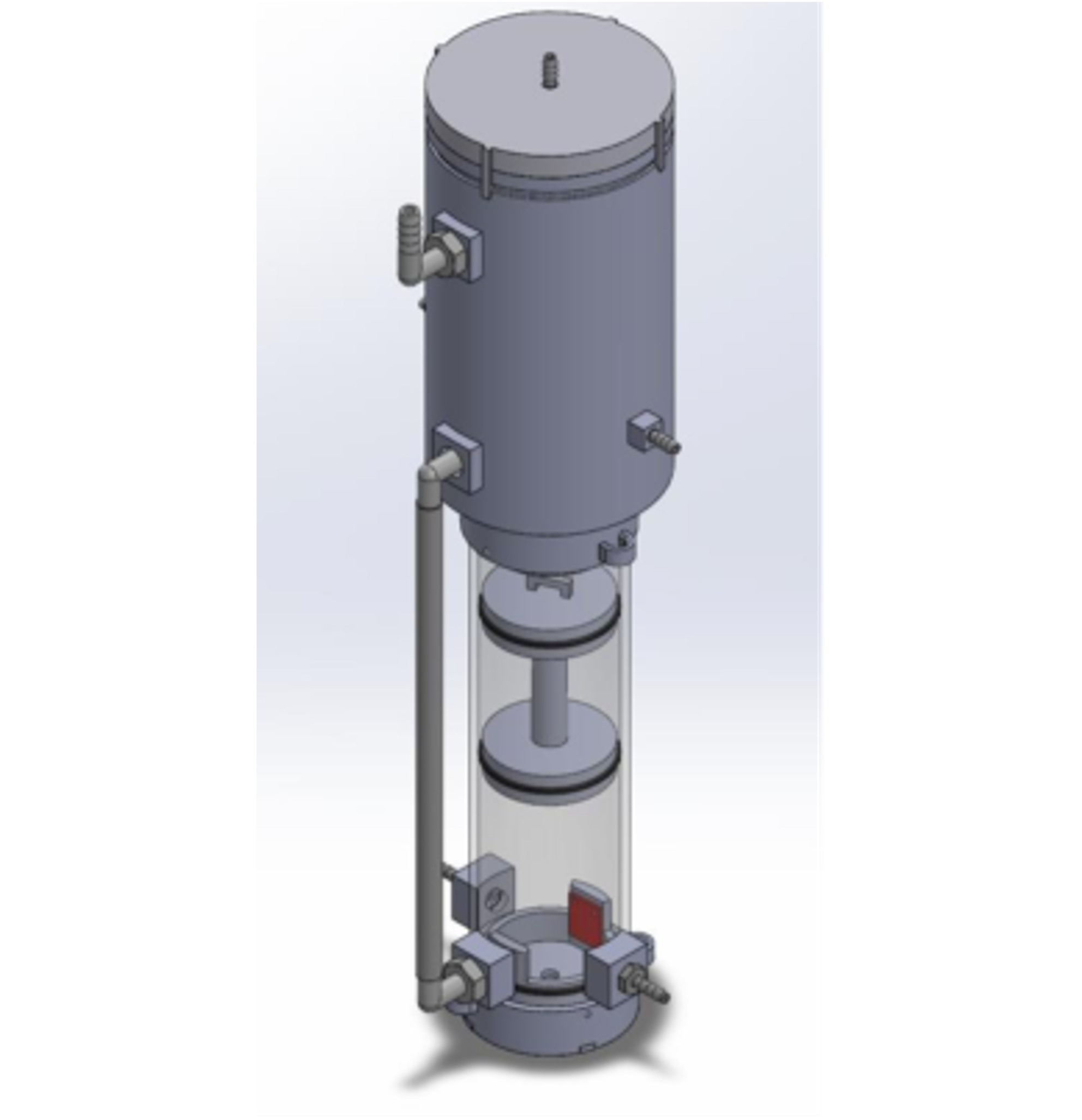Water activity (aw), used to characterize habitability, can be determined by measuring the relative humidity (RH) of an air cavity in equilibrium with a body of water. Measurement requires a vapor chamber housing an RH meter and a route for vapor exchange between the chamber and the water. In currently available instruments, however, the RH sensor must be kept out of contact with the water in order to maintain operation and accurately sense the RH in the vapor chamber, so submerged measurements that can detect changes at varying depths are not possible.
Accurate submerged aw measurement is possible for the first time
Building on an earlier design for a non-submersible instrument by Desai et al. (2021), this new submersible device incorporates a permeable membrane that prevents liquid or other media from flooding the chamber while allowing water vapor to enter. This protects the RH meter from contact with the medium, enabling submersion in dynamic environments.
To keep the membrane from breaking as the instrument descends and pressure builds, a unique syringe design is used that equalizes the pressure on both sides of the membrane. The syringe is plunged and drawn passively as the instrument moves through pressure gradients.
- Surveys aw changes: Submersion into the medium of interest enables survey of changes in aw within a water/medium column at various depths.
- Produces fast, onsite readings: Submersion allows rapid determination of aw levels onsite, without returning samples to a benchtop aw system in a lab.
- Enables rapid decisions: In-situ measurement capabilities can inform other kinds of sampling decisions very rapidly, allowing discretionary sample collection.
- Reduces damage and contamination: Use of membrane protects the sensor from contact with the sample and electronics, allowing for repeated measurements with less contamination when used for multiple types of samples.
- Simplifies design: Membrane eliminates the need for complicated valves to prevent water/media from entering the vapor chamber.
- Adapts to pressure: Open upper side of the syringe allows water to compress the plunger while the lower side is the mobile upper wall of the vapor chamber. This prevents overpressure at the membrane and reduces strain. Internal and external pressure sensors verify proper syringe movement.
- Food science
- Grain or other fine dry substances (e.g., flour) to measure aw while submerged
- Beverage industry to measure aw as an indicator of product quality or freshness
- Other types of food industry monitoring systems with design variations
- Biological/Limnological/Astrobiological field science
- High-salinity environments on earth
- Deep hypersaline anoxic basins, such as Orca basin, a planned target for the Oceans Across Space and Time project funded by NASA’s Astrobiology Program
- Autonomous undersea vehicles used for subsurface water characterization efforts on other worlds such as Europa or Mars

Submersible water activity meter CAD drawing showing the syringe concept
